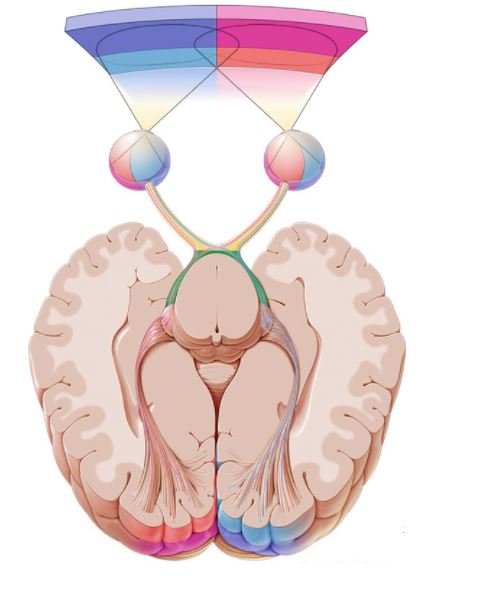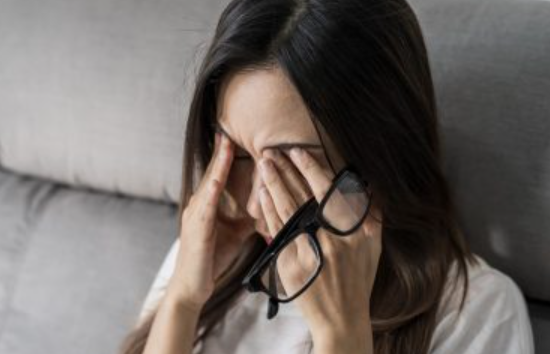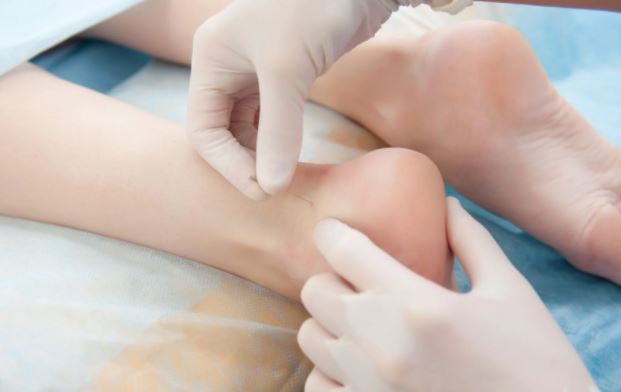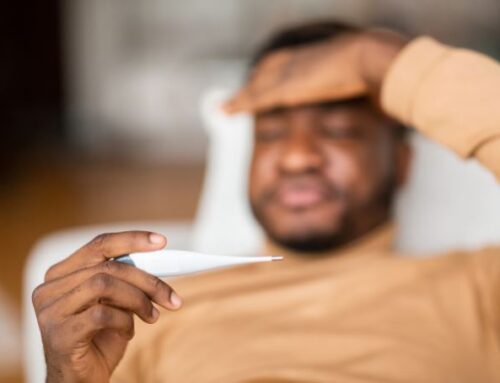The Yin Stepping Vessel and the Yang Stepping Vessel are different extraordinary vessels with distinct paths. However, they both enter the brain and flow through the same points ST-9 Renying over the neck, and BL-1 Jingming eyes. When Yang Qi is excessive, insomnia occurs. However, when Ying Qi is excessive, drowsiness and Narcolepsy.

The paths cross vertically in the brain where the Yin enters the Yang and the Yang enters the Yin at the inner corner of the eye. Then they cross horizontally, where the left and right side of the brain connect.
The Yin Qiao Mai branches from the Kidney Channel and travels from the feet to the head. The Yin Stepping channel parallels the direction of the Kidney Channel, whereas the Yang Stepping Channel contradicts the direction of the Bladder channel. The Yang Stepping Channel moves from the feet to the head and the Bladder aids in removing Yang Qi from the head when necessary to the lower half of the body to regulate the balance of Yin and Yang.
The total length of the 14 channels is 16 Zhan and 2 Chi, which is counted in the Yin Stepping Vessel in women and Yang Stepping Vessel in men. Therefore the Yin is the Vessel while the Yang is the connecting channel in women, and the opposite is true for men.

Eyes
The Stepping Vessels regulate the eyes; the Yang Qi allows the person to remain awake and the Yin Qi promotes sleep at night. Pathology can be seen as insomnia and drowsiness.
The six yang organs and the five yin organs carry Essence and Qi to the eyes to promote vision. Many channels make up the eye system or the Mu Xi. The Governing Vessel connects Mu Xi at Yintang, the Directing Vessel connects at point ST-1 Chengqi, the Yang Stepping Vessel connects at points ST-1 Chengqi, BL-1 Jingming, and G.B.-20 Fengchi, the Yin Stepping Vessel connects at point BL-1 Jingming, and the Yang Linking Vessel connects at points G.B.-14 Yangbai, G.B.-20 Fengchi and Du-16 Feng Fu.
There are three main clusters of points
Periorbital
- BL-1 Jingming
- ST-1 Chengqi
- G.B.-1 Tonziliao
- T.B.-23 Sizhukong
- Yuyao, BL-2 Zanzhu
- G.B.-14 Yangbai
Temporal
- ST-8 Touwei
- G.B.-14 Hanyan
- G.B.-5 Xuanlu
- G.B.-6 Xuanli
- G.B.-7 Qubin
Occipital
- Du-16 Fengfu
- G.B.-20 Fengchi
- B.L.-10 Tianzhu
The four areas of convergence on the Governing Vessel includes the points Du-16 Fengfu, Du-20 Baihui, Bijiao, and Du-26 Renzhong. There is movement of Qi throughout the eyes and the brain and exits at the point G.B.-20 Fengchi.
Gallbladder
The Gall Bladder regulates Yin and Yang in the head; therefore, contraction of the Gall Bladder muscles in the neck will impair the functionality of the right eye. Furthermore, the left angle in the forehead will impair the right foot. Such cases are called the mutual intersections of the muscle channels. The Qi ascends from the foot to the eyes.
Brain
Excess of the Yin and Yang Stepping Vessels can cause insomnia, agitation and Manic behaviors. In neurology, it treats external winds and epilepsy as well as Atrophy Syndrome correlating to sclerosis.

The Points In The Window of Heaven
The Window of Heaven points are situated in the neck and treat rebellious Qi. The point ST-9 Renying that connects to the stomach is on the side of the neck; it is used for headaches in Rebellious Yang, in breathlessness and heaviness of the chest. L.I-18 Futu stands behind point ST-9 that treats the voice, followed by T.B.-16 Tianyou that treats sudden deafness, and the point BL-10 Tianzhu which treats epilepsy and vertigo. The artery of the axilla is LU-3 Tianfu which treats the lungs in pathology such as nosebleeds and vomiting. Both the Window of Heaven and the eye system regulate Qi that travels around the head.
Legs
In pathology of the Yang Stepping Vessel, Yang is tense and Yin is slack; regulating the lateral area of the leg. The uneven distribution of tension can cause difficulty walking such as Atrophy Syndrome.
Defensive Qi
Defensive Qi regulates wakefulness as it travels through the Yang in the day and sleepiness at night as it travels to the Yin Vessel. The Yang Stepping Vessel treats insomnia in Excess. The point KI-6 Zhaohai is fortified and BL-62 Shenmai is reduced to drain the Yin Stepping Vessel. Yin Stepping Vessel treats drowsiness in Excess, where the point KI-6 Zhaohai is fortified and the point BL-1 is reduced.
Defensive Qi travels through the Yang organs twenty five times during the day from the eye to the bladder channel and the little toe. Then it circles around twenty five times throughout the Yin organs in the night following the path from the Kidney, to the Heart, Lungs, Liver, and ending at the Spleen to circle back to the Kidneys.
Both hands will barely contain a pulse in Yang pathology, but in Yin pathology, the pulse will be wry and thin in the left arm caused by mental confusion.







Leave A Comment